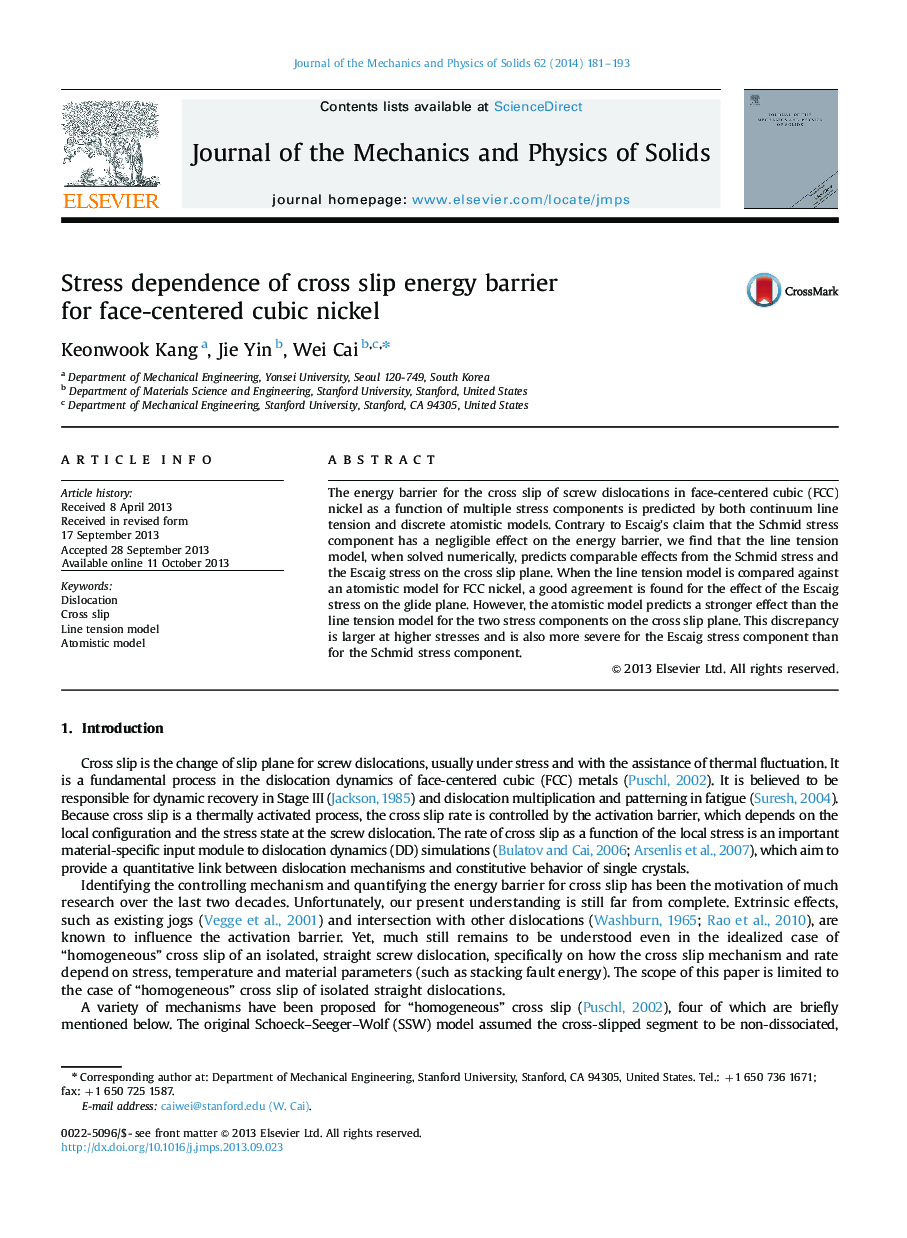| Article ID | Journal | Published Year | Pages | File Type |
|---|---|---|---|---|
| 796649 | Journal of the Mechanics and Physics of Solids | 2014 | 13 Pages |
The energy barrier for the cross slip of screw dislocations in face-centered cubic (FCC) nickel as a function of multiple stress components is predicted by both continuum line tension and discrete atomistic models. Contrary to Escaig's claim that the Schmid stress component has a negligible effect on the energy barrier, we find that the line tension model, when solved numerically, predicts comparable effects from the Schmid stress and the Escaig stress on the cross slip plane. When the line tension model is compared against an atomistic model for FCC nickel, a good agreement is found for the effect of the Escaig stress on the glide plane. However, the atomistic model predicts a stronger effect than the line tension model for the two stress components on the cross slip plane. This discrepancy is larger at higher stresses and is also more severe for the Escaig stress component than for the Schmid stress component.
